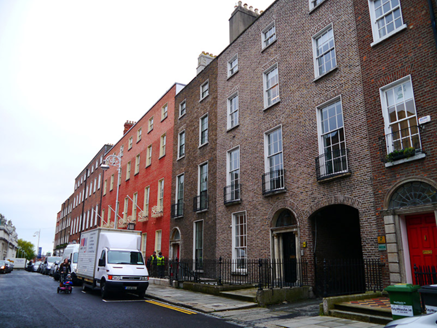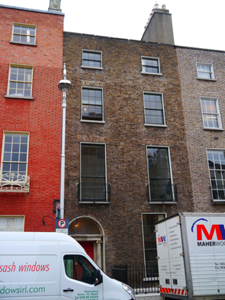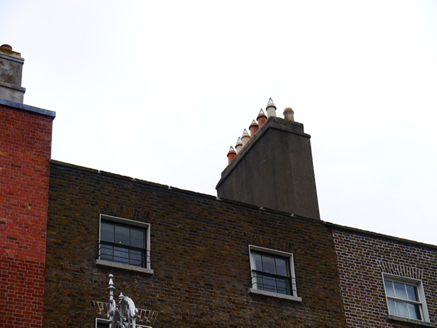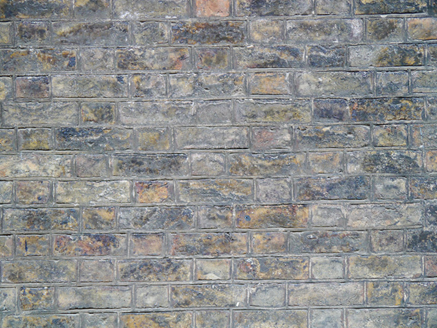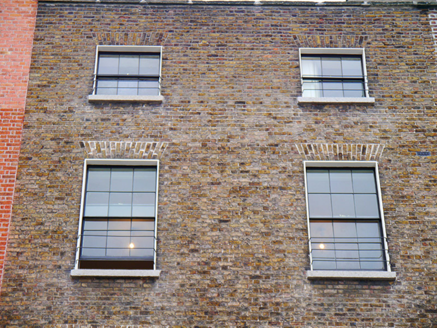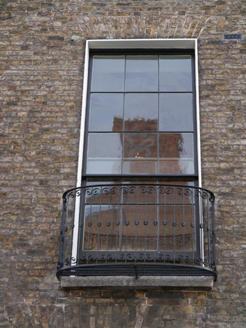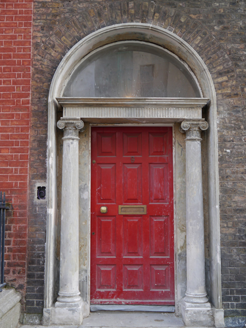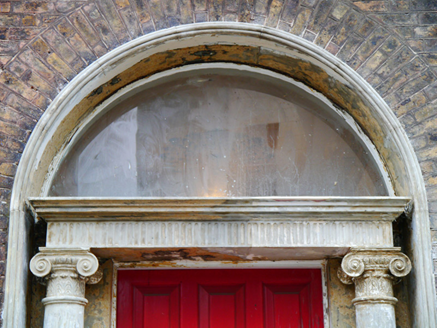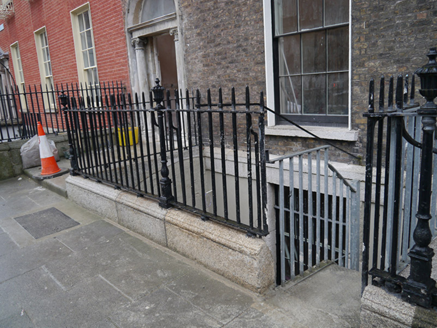Survey Data
Reg No
50930011
Rating
Regional
Categories of Special Interest
Architectural, Artistic
Original Use
House
Historical Use
Office
Date
1810 - 1820
Coordinates
316354, 233300
Date Recorded
21/10/2015
Date Updated
--/--/--
Description
Attached two-bay four-storey over basement former townhouse, built c. 1815, with two-storey return to north of rear (east) elevation. Later in use as office, being converted to residential use (2015). M-profiled pitched roof with two rendered chimneystacks to south party wall having lipped yellow clay pots, parapet gutters, all concealed behind parapet with granite coping. Brown brick walling laid in Flemish bond over painted rendered basement with granite plinth course over. Square-headed window openings with masonry sills (some cast-concrete), brick voussoirs and patent reveals. Granite surround and metal grille to basement window opening. Timber sliding sashes; largely six-over-six, nine-over-six to ground and first floors, three-over-three to third floor and eight-over-eight to basement. Wyatt-style window to north bay of rear (east) elevation. Decorative bowed iron balconettes affixed to first floor surrounds, iron guard rails to upper floors. Round-headed door opening with sandstone doorcase comprising moulded linings, composite columns on plinth stops rising to moulded cornice over fluted frieze, plain fanlight over raised-and-field timber panelled replacement door. Stone-flags to entrance platform with single step to street flanked by iron railings with decorative corner posts over granite plinth, enclosing basement well to south. Plainly detailed square-headed door opening beneath entrance platform, accessed by steel steps from street level. Street fronted on the east side of Ely Place, abutted by Ely House to the north (50930012).
Appraisal
Nos. 9-10 (50930010-11) were likely built as a pair, sometime after 1811, on the site of the former garden of Ely House, which remains to the north. Characterised by balanced proportions and restrained detailing, the principal east elevation is enriched by a good classical doorcase, iron balconettes, railings and fanlight. Despite the insertion of some replacement fabric, the pair is well preserved, serving as excellent examples of the Dublin Georgian idiom, and contributing to the architectural continuity of the streetscape. Originally named Hume Row, Ely Place was laid out in 1768, and was named after the surgeon Gustavus Hume who built his house at No. 1 Hume Street (now demolished). With the construction of Ely House (50930012) in 1770, Ely Place developed as a desirable residential street throughout the late-eighteenth and early-nineteenth centuries.
